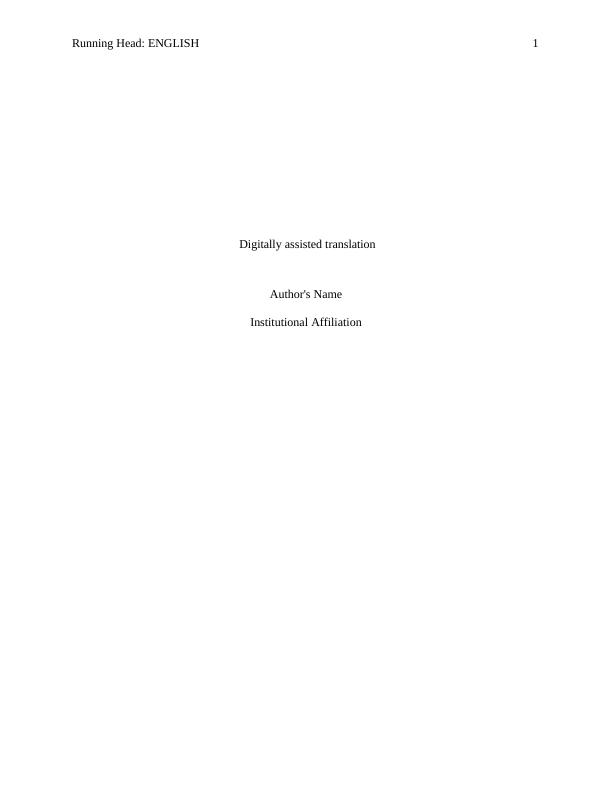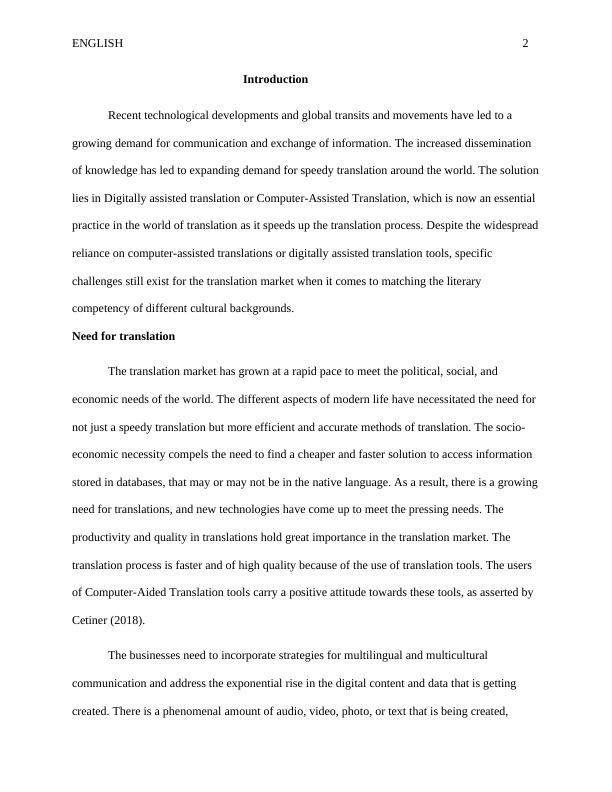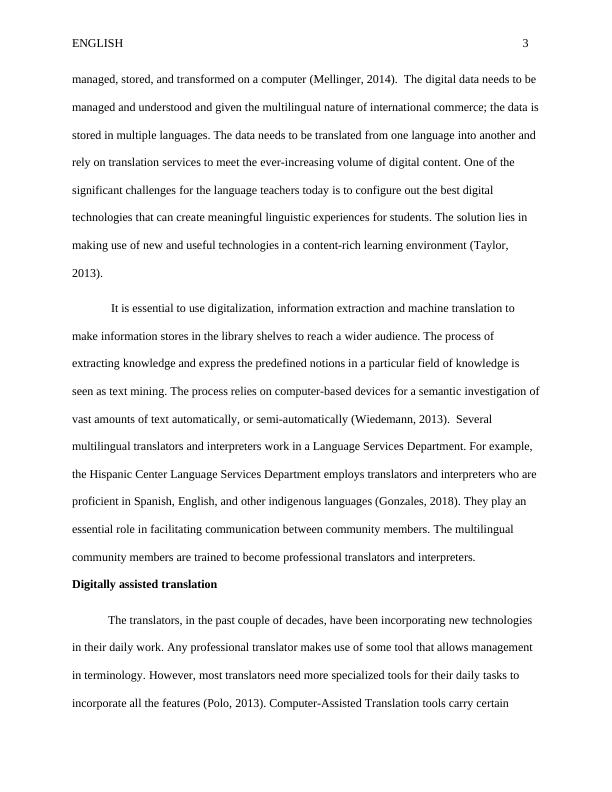Digitally Assisted Translation: Challenges and Solutions
Write a well-structured essay or project on a topic of your choice, demonstrating original thought and incorporating relevant concepts from the course. The essay must be 2,500 words in length, excluding references and quotations.
12 Pages3539 Words37 Views
Added on 2023-03-17
About This Document
This article discusses the growing demand for speedy translation in the globalized world and the role of digitally assisted translation in meeting this demand. It explores the challenges faced by translators in matching the literary competency of different cultural backgrounds and the need for more efficient and accurate methods of translation. The article also provides insights into the process of digitally assisted translation and the various software tools used in the field. Additionally, it discusses the impact of technology on language learning and the challenges faced in translating literary texts.
Digitally Assisted Translation: Challenges and Solutions
Write a well-structured essay or project on a topic of your choice, demonstrating original thought and incorporating relevant concepts from the course. The essay must be 2,500 words in length, excluding references and quotations.
Added on 2023-03-17
ShareRelated Documents
End of preview
Want to access all the pages? Upload your documents or become a member.
Assignment - Natural Language Processing
|12
|2827
|203
Business Requirements Analysis
|12
|3717
|68
Assignment on MS-OFFICE Programming Language
|3
|677
|70
Database Application Direction | Data Warehouse
|5
|799
|22
IT Service Management in Health Department
|10
|2753
|89
Knowledge-Based Systems Presentation 2022
|14
|13189
|20




